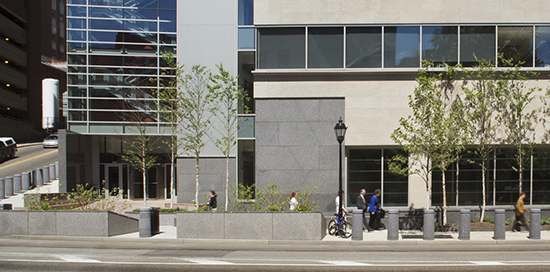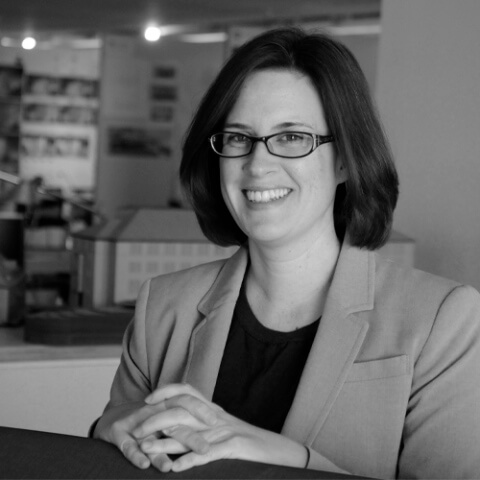
Last month we attended a screening of The Human Scale at the Somerville Theatre. The City of Somerville and the New England Chapter of the Congress for New Urbanism (CNU) hosted the screening.
The Human Scale, directed by Andreas Dalsgaard, is a documentary exploring the people-centered urban design methods of Jan Gehl. Gehl’s bottom-up method involves the meticulous process of recording the actions of people within an urban space. His team asks questions such as: How many people are walking or riding bicycles? Are they sitting in the shade or sun? Are pedestrians safely crossing the street? His approach is a distinct break from past city planning methods, which have, for the past 80 years, focused mainly on creating space for vehicles.
Gehl’s firm has discovered that an influx of people into overcrowded, vehicle-centric cities results in seclusion, loneliness and the loss of public life. His work aims to bring and maintain vibrant public spaces into cities around the world. The film presented a number of case studies that illustrated his methodologies.
The Christchurch Recovery Plan: We knew that Christchurch, NZ was devastated by an earthquake in 2011. What we didn’t know is that the central business district was so damaged that public officials completely closed the area to human habitation, termed the “Red Zone.” Turning adversity into opportunity, this area became a virtual clean slate for urban design; a chance for the residents to build the city that they wanted. Gehl Architects assisted the Christchurch community in a public process that collected 106,000 ideas. The overall consensus was for a lower scale (6 story), pedestrian friendly streetscape instead of high-rise commercial buildings. The results of the survey were incorporated into public policy that limited construction height in the redevelopment area.
Pedestrian Routes in Chongqing: What was interesting to find in Chongqing, China is that life is highly pedestrian and street oriented, but the city has still evolved into a primarily vehicle-centric urban environment. One of the main interventions into Chongqing was the addition of new and upgraded pedestrian networks along the local river, designed to provide space for dancing, vendors and sports, all of which were found to be important to local life.
Reclaiming Public Space in New York: The most notable changes in New York are the new public plaza at Times Square and the addition of a bike path along Broadway Blvd. In 2009, Gehl Architects worked with the City of New York to analyze movement of people in the downtown area. The goal was to identify critical space that could be reclaimed for public activities, while simultaneously alleviating traffic congestion and pedestrian injuries. A pilot program was put into effect, which created bike lanes and closed street traffic at squares, including Times Square. The Square drew national attention during the eight month test period. People, chairs and tables filled the major intersection, while grumbling cabbies used detours. In 2010, Mayor Bloomberg announced that Times Square would be closed permanently to traffic, noting that vehicle crashes had decreased significantly (NY Daily News).
As we have all seen in Western cities, the focus on vehicle needs as a planning standard has degraded the vitality of urban streets. Parking lots, overpasses and highway-scaled buildings do not engender safe and enjoyable environments. The Human Scale emphasizes quality of life as the planning standard. Through small steps and dedication, many architects and urban planners have begun the process of transformation. The recent trend in downtown revival (such as Times Square and Boston’s Greenway) is evidence that this standard has started to take hold.
Another challenge facing us in the next 50 years is in developing countries. The film warns us that growing cities in China and India are headed for the same mistakes that Western cities already made, and at a faster rate. Impossibly congested streets, loss of community and air pollution are just some of the issues starting to plague these cities. As designers working in the global market, we have a great opportunity to transmit lessons learned, and bring new lessons home to our own communities.



